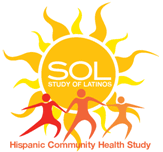| Title | Calibration of activity-related energy expenditure in the Hispanic Community Health Study/Study of Latinos (HCHS/SOL). |
| Publication Type | Publication |
| Year | 2019 |
| Authors | Shaw PA, McMurray R, Butte N, Sotres-Alvarez D, Sun H, Stoutenberg M, Evenson KR, Wong WW, Moncrieft AE, Sanchez-Johnsen LAP, Carnethon MR, Arredondo E, Kaplan RC, Matthews CE, Mossavar-Rahmani Y |
| Journal | J Sci Med Sport |
| Volume | 22 |
| Issue | 3 |
| Pagination | 300-306 |
| Date Published | 2019 Mar |
| ISSN | 1878-1861 |
| Keywords | Accelerometry, Adolescent, Adult, Aged, calibration, Calorimetry, Indirect, Cohort Studies, Energy Metabolism, exercise, Female, Hispanic or Latino, Humans, Male, Middle Aged, Models, Statistical, Self Report, Young Adult |
| Abstract | OBJECTIVES: Usual physical activity (PA) is a complex exposure and typical instruments to measure aspects of PA are subject to measurement error, from systematic biases and biological variability. This error can lead to biased estimates of associations between PA and health outcomes. We developed a calibrated physical activity measure that adjusts for measurement error in both self-reported and accelerometry measures of PA in adults from the US Hispanic Community Health Study/Study of Latinos (HCHS/SOL), a community-based cohort study.DESIGN: Total energy expenditure (TEE) from doubly labeled water and resting energy expenditure (REE) from indirect calorimetry were measured in 445 men and women aged 18-74years in 2010-2012, as part of the HCHS/SOL Study of Latinos: Nutrition & Physical Activity Assessment Study (SOLNAS). Measurements were repeated in a subset (N=98) 6months later.METHOD: Calibration equations for usual activity-related energy expenditure (AEE=0.90×TEE-REE) were developed by regressing this objective biomarker on self-reported PA and sedentary behavior, Actical accelerometer PA, and other subject characteristics.RESULTS: Age, weight and height explained a significant amount of variation in AEE. Actical PA and wear-time were important predictors of AEE; whereas, self-reported PA was not independently associated with AEE. The final calibration equation explained fifty percent of variation in AEE.CONCLUSIONS: The developed calibration equations can be used to obtain error-corrected associations between PA and health outcomes in HCHS/SOL. Our study represents a unique opportunity to understand the measurement characteristics of PA instruments in an under-studied Hispanic/Latino cohort. |
| DOI | 10.1016/j.jsams.2018.07.021 |
| Alternate Journal | J Sci Med Sport |
| PubMed ID | 30177242 |
| PubMed Central ID | PMC6370477 |
| Grant List | R01 AG055527 / AG / NIA NIH HHS / United States N01HC65236 / HL / NHLBI NIH HHS / United States N01HC65235 / HL / NHLBI NIH HHS / United States N01HC65234 / HL / NHLBI NIH HHS / United States N01HC65233 / HL / NHLBI NIH HHS / United States N01HC65237 / HL / NHLBI NIH HHS / United States R01 HL095856 / HL / NHLBI NIH HHS / United States UL1 TR001073 / TR / NCATS NIH HHS / United States UL1 TR002556 / TR / NCATS NIH HHS / United States P30 DK092949 / DK / NIDDK NIH HHS / United States R01 HL136266 / HL / NHLBI NIH HHS / United States |
Calibration of activity-related energy expenditure in the Hispanic Community Health Study/Study of Latinos (HCHS/SOL).
MS#:
0140
ECI:
Yes
Manuscript Status:
Published
